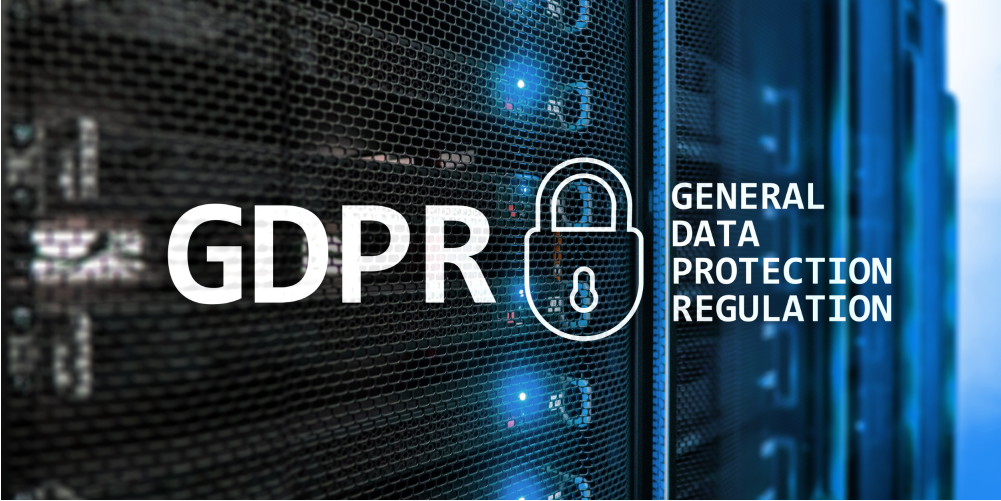Ecommerce Development, zBlog
Application Security: Safeguarding the Digital Backbone of Modern Enterprises

In today’s digital landscape, applications have become the lifeblood of modern enterprises, enabling them to streamline operations, enhance customer experiences, and drive innovation. However, as organizations increasingly rely on applications to power their critical business processes, the need for robust application security measures has never been more paramount.
The growing sophistication of cyber threats, combined with the ever-expanding attack surface posed by complex application architectures, has made application security a top priority for organizations across various industries. In this thought leadership piece, we’ll delve into the realm of application security, exploring its significance, challenges, best practices, and the path forward for organizations striving to protect their digital assets.
The Importance of Application Security

Applications have become the gateways through which sensitive data flows, transactions are executed, and critical business operations are conducted. As such, any vulnerability or weakness in an application’s security posture can potentially expose an organization to a wide range of risks, including:
- Data Breaches: Compromised applications can lead to the unauthorized access, theft, or manipulation of sensitive data, such as customer information, intellectual property, or financial records.
- Business Disruption: Successful cyber attacks targeting applications can result in system downtime, operational disruptions, and loss of productivity, impacting an organization’s ability to serve its customers and maintain business continuity.
- Regulatory Compliance Violations: Many industries are subject to stringent regulations and standards governing data privacy and security. Failing to adequately secure applications can lead to non- compliance, resulting in hefty fines, legal consequences, and reputational damage.
- Financial Losses: Data breaches, system outages, and remediation efforts can incur substantial financial costs for organizations, ranging from lost revenue and productivity to legal fees and regulatory penalties.
- Reputational Harm: High-profile cyber incidents involving applications can severely tarnish an organization’s reputation, eroding customer trust and confidence, and potentially impacting long-term business prospects.
The Evolving Threat Landscape

As applications become more complex and interconnected, the attack surface for malicious actors continues to expand. Traditional perimeter-based security measures are no longer sufficient in an era where applications span multiple environments, including on-premises, cloud, and hybrid architectures.
Furthermore, the threat landscape is constantly evolving, with adversaries employing increasingly sophisticated tactics, such as:
- Automated Attack Tools: The proliferation of automated tools and scripts has made it easier for attackers to scan for and exploit application vulnerabilities at scale.
- Advanced Persistent Threats (APTs): Well-resourced and highly skilled threat actors, often motivated by financial gain or espionage, can conduct targeted and persistent attacks against applications, evading traditional security measures.
- Zero-Day Exploits: Vulnerabilities that are unknown to software vendors or security researchers can be actively exploited by adversaries before patches or mitigations are available.
- Supply Chain Attacks: Compromising third-party components, libraries, or services integrated into applications can provide attackers with a covert entry point into an organization’s infrastructure.
- Insider Threats: Malicious insiders or disgruntled employees with privileged access can intentionally or unintentionally compromise application security, posing a significant risk to organizations.
Addressing these evolving threats requires a comprehensive and proactive approach to application security, spanning the entire software development lifecycle and encompassing people, processes, and technology.
Principles of Effective Application Security

To effectively mitigate risks and protect applications from cyber threats, organizations should embrace the following principles of application security:
- Secure Software Development Life Cycle (SDLC): Integrating security practices and controls throughout the entire software development lifecycle, from requirements gathering and design to coding, testing, and deployment, is crucial for identifying and addressing vulnerabilities early on.
- Security by Design: Adopting a “security by design” mindset ensures that security considerations are incorporated into the architecture and design of applications from the outset, rather than being an afterthought.
- Continuous Monitoring and Testing: Regularly assessing applications for vulnerabilities, through techniques such as static code analysis, dynamic testing, and penetration testing, is essential for identifying and remediating potential security weaknesses.
- Secure Coding Practices: Providing developers with comprehensive training and guidance on secure coding practices, including input validation, output encoding, and proper handling of sensitive data, can significantly reduce the risk of introducing vulnerabilities during the development process.
- Least Privilege and Access Control: Implementing robust access control mechanisms and adhering to the principle of least privilege can limit the potential impact of a successful attack by restricting access to sensitive resources and functionality.
- Secure Configuration and Hardening: Ensuring that applications, underlying systems, and supporting infrastructure are properly configured and hardened against known vulnerabilities and security weaknesses is essential for reducing the attack surface.
- Secure Third-Party Dependencies: Carefully vetting and monitoring third-party libraries, frameworks, and services integrated into applications can help mitigate the risks associated with supply chain attacks and vulnerabilities in external components.
- Threat Modeling and Risk Assessment: Conducting regular threat modeling exercises and risk assessments can help organizations identify potential attack vectors, prioritize security efforts, and allocate resources effectively.
- Incident Response and Remediation: Establishing robust incident response and remediation processes can enable organizations to quickly detect, contain, and recover from security incidents involving applications, minimizing the potential impact and business disruption.
Embracing a Comprehensive Application Security Approach

Effective application security requires a holistic and multi-layered approach that spans the entire application lifecycle and involves collaboration among various stakeholders, including:
- Development Teams: Developers play a crucial role in adhering to secure coding practices, implementing security controls, and ensuring that applications are designed and built with security in mind.
- Security Professionals: Security experts, including application security specialists, penetration testers, and security architects, provide guidance, perform risk assessments, and conduct regular security testing and monitoring activities.
- Operations and Infrastructure Teams: Ensuring that applications are deployed and operated in a secure and hardened environment is essential for maintaining a robust security posture.
- Executive Leadership and Governance: Establishing a strong security culture, allocating appropriate resources, and providing executive-level support and oversight are critical for driving effective application security initiatives.
- Third-Party Partners and Vendors: Collaborating with third-party partners, vendors, and service providers involved in the development, deployment, or operation of applications is necessary to ensure a consistent and coordinated approach to security.
By fostering cross-functional collaboration and aligning application security efforts across these stakeholder groups, organizations can achieve a more comprehensive and effective approach to protecting their digital assets.
Emerging Trends and Future Considerations

As the application security landscape continues to evolve, several emerging trends and future considerations are shaping the way organizations approach this critical aspect of cybersecurity:
- DevSecOps and Shift-Left Security: The integration of security practices into DevOps methodologies, known as DevSecOps, is gaining traction as organizations strive to “shift left” and address security concerns earlier in the software development lifecycle.
- Automation and Continuous Security: Leveraging automation and continuous security testing tools can help organizations keep pace with the rapid pace of application development and deployment, enabling more efficient and scalable security practices.
- Cloud Security and Containerization: As applications increasingly migrate to cloud environments and leverage containerization technologies, organizations must adapt their cloud security strategies to address the unique challenges and risks associated with these environments.
- Artificial Intelligence and Machine Learning: The adoption of AI and machine learning techniques can enhance application security by enabling more sophisticated threat detection, vulnerability identification, and automated remediation capabilities.
- Zero Trust Security Models: The zero trust security model, which assumes that no user or system should be inherently trusted, is gaining traction as a more robust approach to securing distributed and cloud-native applications.
- Secure Software Supply Chains: With the increasing reliance on third-party components and open-source libraries, organizations must adopt strategies to secure their software supply chains and mitigate the risks of supply chain attacks.
- Privacy and Regulatory Compliance: As data privacy regulations and standards continue to evolve, organizations must ensure that their application security practices align with these requirements, protecting sensitive data and maintaining compliance.
By staying ahead of these trends and proactively adapting their application security strategies, organizations can better position themselves to safeguard their digital assets and maintain a competitive edge in an increasingly threat-filled landscape.
Conclusion
In the digital age, applications have become the backbone of modern enterprises, enabling innovation, enhancing customer experiences, and driving business growth. However, as the reliance on applications increases, so too does the need for robust application security measures to protect against ever-evolving cyber threats.
Effective application security requires a comprehensive and proactive approach that spans the entire software development lifecycle and involves collaboration among various stakeholders, including development teams, security professionals, operations teams, and executive leadership. By embracing principles such as secure coding practices, continuous monitoring and testing, and security by design, organizations can significantly reduce their risk exposure and safeguard their digital assets.
As the application security landscape continues to evolve, organizations must stay vigilant and adapt their strategies to address emerging trends and future considerations. The integration of DevSecOps methodologies, leveraging automation and continuous security testing, and adopting zero-trust security models are becoming increasingly important to keep pace with the rapid pace of application development and deployment.
Furthermore, the growing adoption of cloud computing and containerization technologies necessitates a re-evaluation of security practices to address the unique challenges and risks associated with these environments. Organizations must also be prepared to secure their software supply chains and mitigate the risks of supply chain attacks, as the reliance on third-party components and open-source libraries continues to grow.
The application security domain is also being shaped by advancements in artificial intelligence and machine learning techniques. These technologies hold the promise of enhancing threat detection, vulnerability identification, and automated remediation capabilities, enabling organizations to stay ahead of evolving threats and more effectively protect their digital assets.

Additionally, the ever-evolving landscape of data privacy regulations and standards is a critical consideration for organizations when it comes to application security. Ensuring that sensitive data is adequately protected and maintaining compliance with relevant regulations, such as the General Data Protection Regulation (GDPR) and the California Consumer Privacy Act (CCPA), is not only a legal obligation but also essential for preserving customer trust and maintaining a positive reputation.
Moving forward, the success of organizations in the realm of application security will be determined by their ability to foster a culture of security awareness and collaboration across various stakeholders, including development teams, security professionals, operations teams, and executive leadership. By fostering a shared understanding of the importance of application security and aligning efforts across these groups, organizations can more effectively identify and mitigate risks, implement robust security controls, and respond swiftly to security incidents.
Effective application security is not a one-time endeavor but rather an ongoing journey that requires continuous improvement, adaptation, and vigilance. As cyber threats continue to evolve and become more sophisticated, organizations must remain proactive in their approach, investing in the latest technologies, adopting industry best practices, and cultivating a skilled and knowledgeable workforce capable of navigating the complexities of the application security landscape.
Ultimately, the success of modern enterprises is inextricably linked to the security and resilience of their digital assets, particularly their applications. By prioritizing application security and implementing a comprehensive and proactive strategy, organizations can not only protect themselves from cyber threats but also gain a competitive advantage by fostering trust and confidence among their customers, partners, and stakeholders.
In the digital age, where applications are the engines driving innovation and business growth, application security is no longer an optional consideration but a critical imperative for organizations seeking to thrive and succeed in an increasingly interconnected and threat-filled world.
Trantor, a leader in digital transformation and technology solutions, offers comprehensive services to address the critical need for robust application security in today’s digital landscape. Leveraging our expertise in cybersecurity, software development, and cloud technologies, Trantor partners with organizations to strengthen their security posture and safeguard their digital assets. From conducting thorough risk assessments and implementing secure coding practices to deploying advanced security testing tools and establishing incident response protocols, Trantor provides end-to-end support to help organizations mitigate risks, comply with regulations, and protect their applications against evolving cyber threats. With Trantor’s tailored solutions and proactive approach to application security, organizations can confidently navigate the complexities of the modern threat landscape and maintain a competitive edge in their respective industries.




